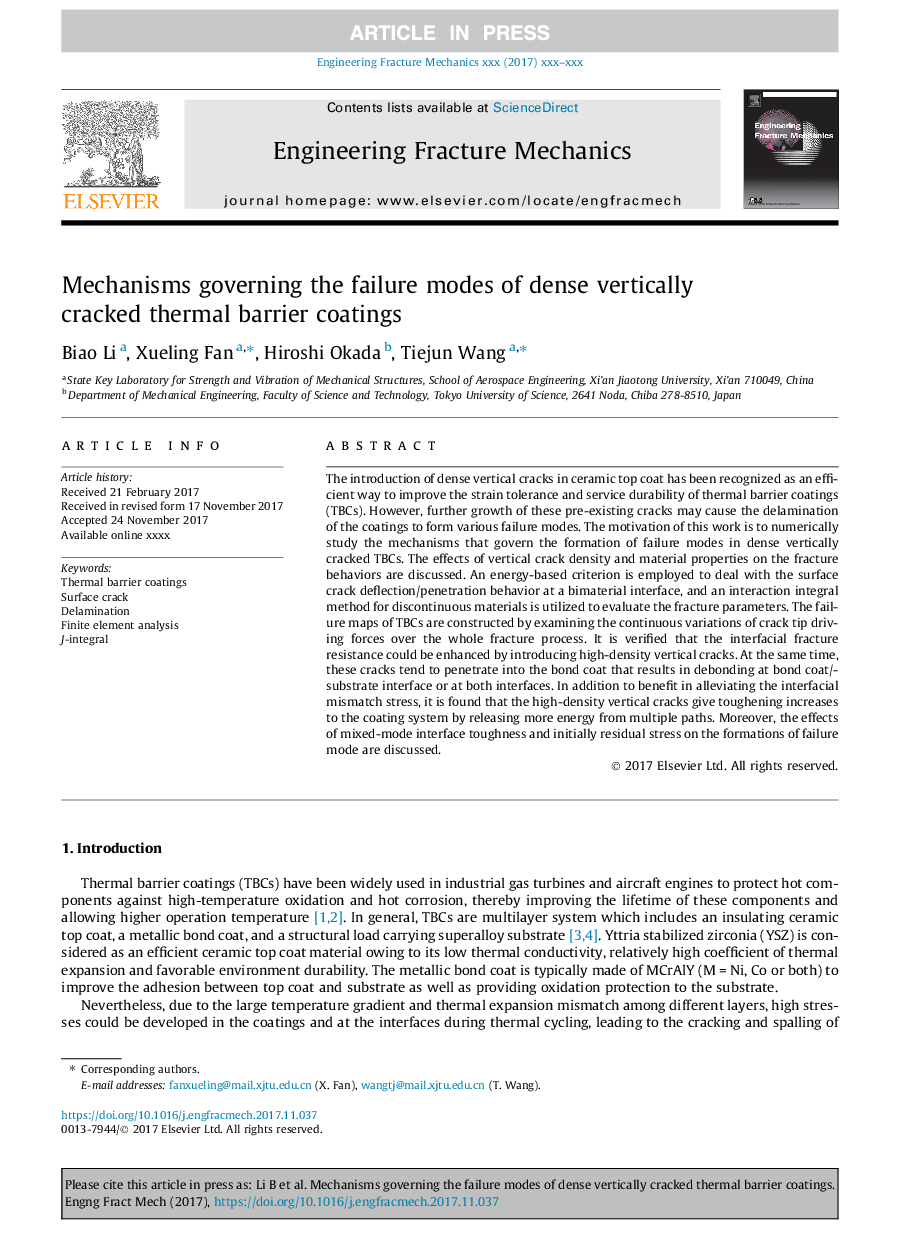| Article ID | Journal | Published Year | Pages | File Type |
|---|---|---|---|---|
| 7169174 | Engineering Fracture Mechanics | 2018 | 30 Pages |
Abstract
The introduction of dense vertical cracks in ceramic top coat has been recognized as an efficient way to improve the strain tolerance and service durability of thermal barrier coatings (TBCs). However, further growth of these pre-existing cracks may cause the delamination of the coatings to form various failure modes. The motivation of this work is to numerically study the mechanisms that govern the formation of failure modes in dense vertically cracked TBCs. The effects of vertical crack density and material properties on the fracture behaviors are discussed. An energy-based criterion is employed to deal with the surface crack deflection/penetration behavior at a bimaterial interface, and an interaction integral method for discontinuous materials is utilized to evaluate the fracture parameters. The failure maps of TBCs are constructed by examining the continuous variations of crack tip driving forces over the whole fracture process. It is verified that the interfacial fracture resistance could be enhanced by introducing high-density vertical cracks. At the same time, these cracks tend to penetrate into the bond coat that results in debonding at bond coat/substrate interface or at both interfaces. In addition to benefit in alleviating the interfacial mismatch stress, it is found that the high-density vertical cracks give toughening increases to the coating system by releasing more energy from multiple paths. Moreover, the effects of mixed-mode interface toughness and initially residual stress on the formations of failure mode are discussed.
Related Topics
Physical Sciences and Engineering
Engineering
Mechanical Engineering
Authors
Biao Li, Xueling Fan, Hiroshi Okada, Tiejun Wang,
